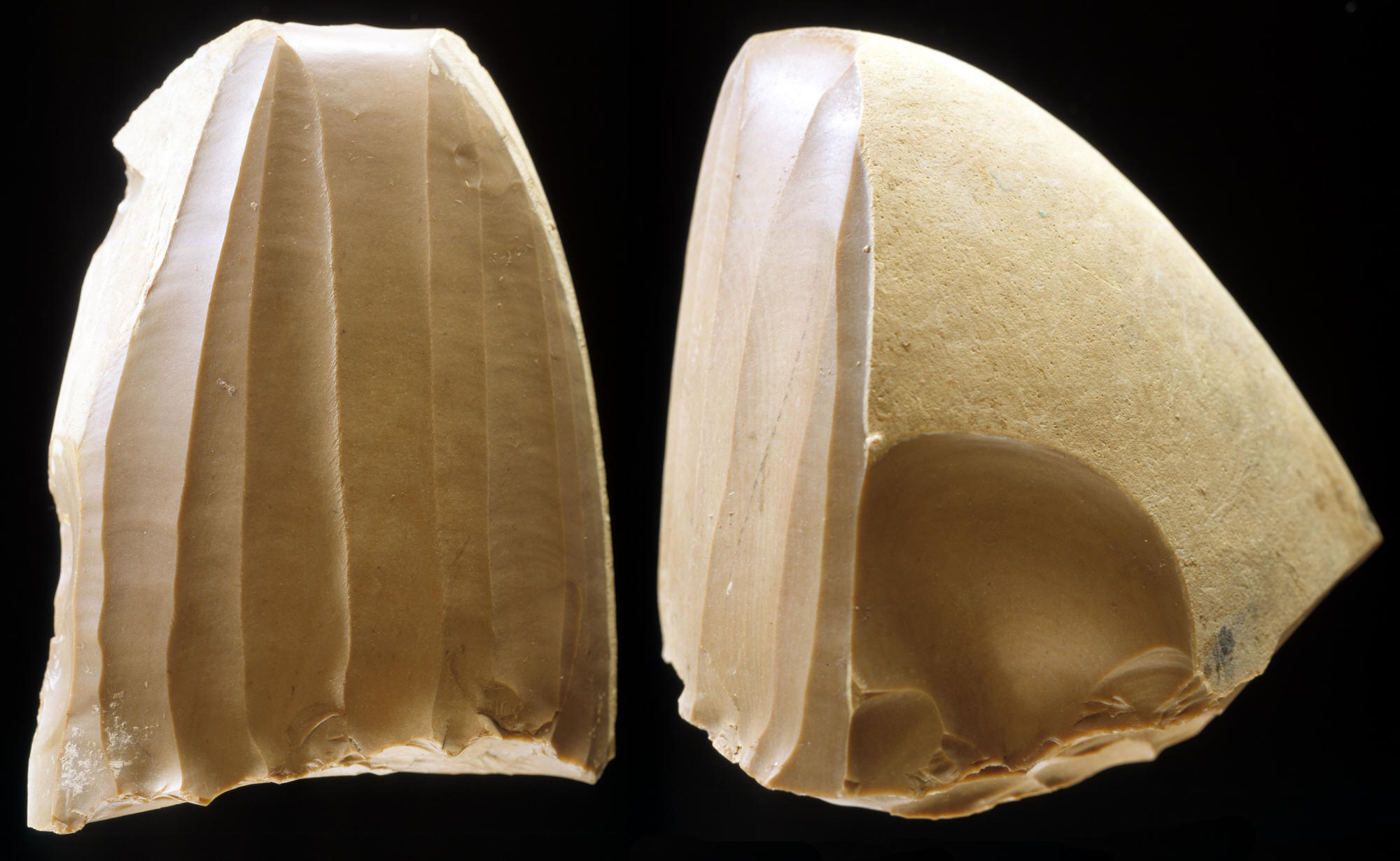|
COMBINATION CANAANEAN BLADE & This core, and other cores from Tell Halif are most notable for their duel purpose blade/flake tool production. They produced long narrow blades from one side of the core and large oval tabular flakes from another side. The picture on the left shows an area of the core where long narrow blades were uniformly removed for the production of sickle blades and reaping knives. The picture on the right shows an area of the core where a large oval cortical (outer surface) flake was removed for use as either a scraper or knife. Canaanean cores are described as large single platform blocks that were worked on one to three faces. Blades from Tell Halif are described as having been removed indirectly with a punch. But Chabot and Pelegrin's analysis of hundreds of Canaanean blades from the Tell Atij and Tell Gudeda sites in Syria, showed a high percentage of those blades were removed by lever-pressure with the use of a copper point. Platforms are narrow relative to the blade and often show faceting. Unlike other post Neolithic sickle blade technologies in the Levant region, Canaanean blade technology is known for the production of long blades. These types of blades can be greater than 5 7/8 inches (15 cm) long and could produce multiple sickle blade segments per blade.
|
